Under the Siberian’s winter freezing temperatures, Baïkal lake’s surface is changing into ice several months a year, usually from beginning of January to May. The 1 to 2 meters thick ice, allows people and even cars circulation on it.
The following photos have been taken during a frozen lake’s foot crossing. Several aspects of the ice, sun ray’s reverberation on it, the lights playing through the “Toros” are as many photogenic subjects that would make this crossing unforgettable.
The Baïkal lake (in Russian : “Озеро Байкал, Ozero Baïkal”) is located in Russia, in south part of Siberia
You can’t possibly not use superlatives to describe Baïkal Lake. This lake, which is twenty-five million years old, is the oldest existing lake. Baikal, which is 636 km long and up to 79 km wide, is also the largest lake in the world. And with a depth of up to 1642 meters, it is the deepest on the planet.
Baikal’s huge dimensions make it the largest reserve of liquid fresh water in the world. This means 23,600 km3 of water, or 23,600,000,000,000 cubic meters. This volume of water would be enough to cover with liquid 1.6 cm all the Earth’s land surface.
Imagine that the water of Baïkal Lake is completely frozen and cut into ice blocks. If these blocks were used for the construction of a wall measuring 1,000 height meters and 100 thick meters, there would be enough material for the building to be 240,000 kilometers long, long enough to go around the world six times.
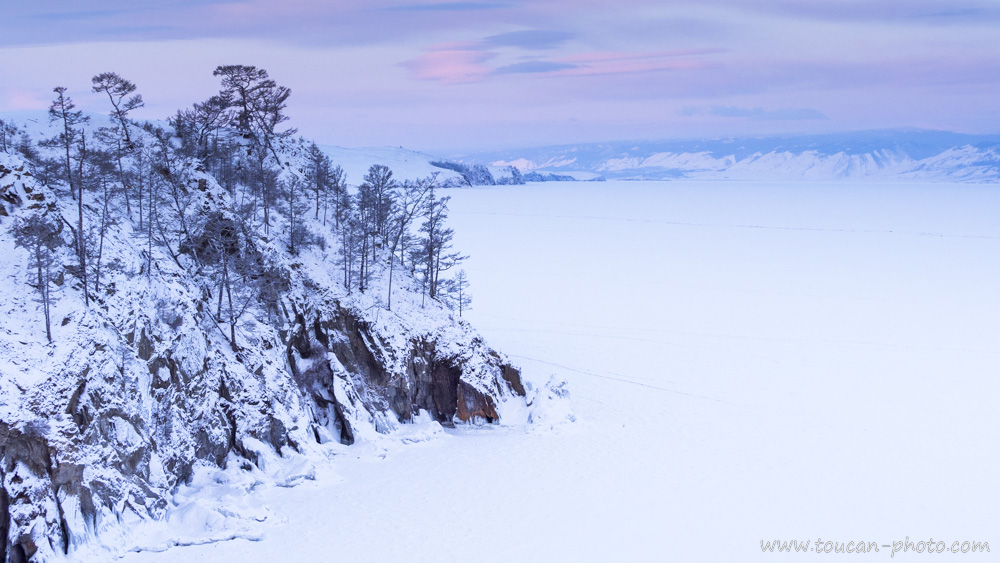 View of the frozen lake that has just covered with a snowpack. This photograph was taken from Olkhone Island, located about 15 km from the lake’s West shore, which can be seen in the background.
View of the frozen lake that has just covered with a snowpack. This photograph was taken from Olkhone Island, located about 15 km from the lake’s West shore, which can be seen in the background.
The lake has 27 islands, and Olkhone, which is 70km long, is the largest one of them.
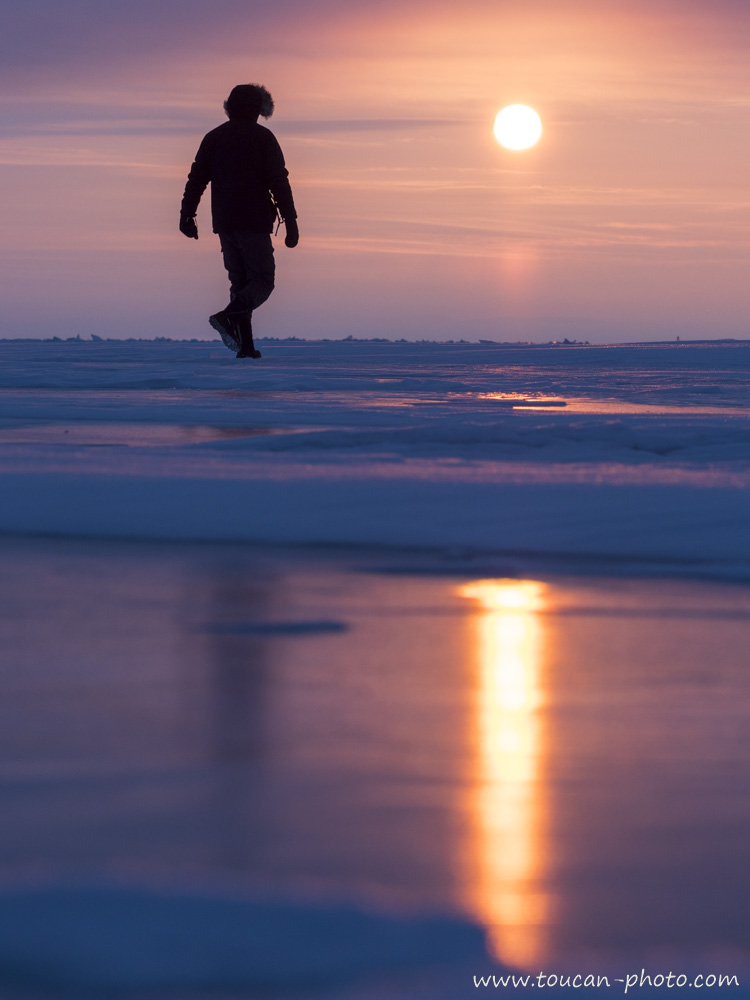 At sunrise, lonely walker goes to discover the frozen lake
At sunrise, lonely walker goes to discover the frozen lake
 Paranomic view from the lake to the coast. Breaking zones are numerous on the lake. They are the result of the frozen cover almost “tectonic” activity
Paranomic view from the lake to the coast. Breaking zones are numerous on the lake. They are the result of the frozen cover almost “tectonic” activity
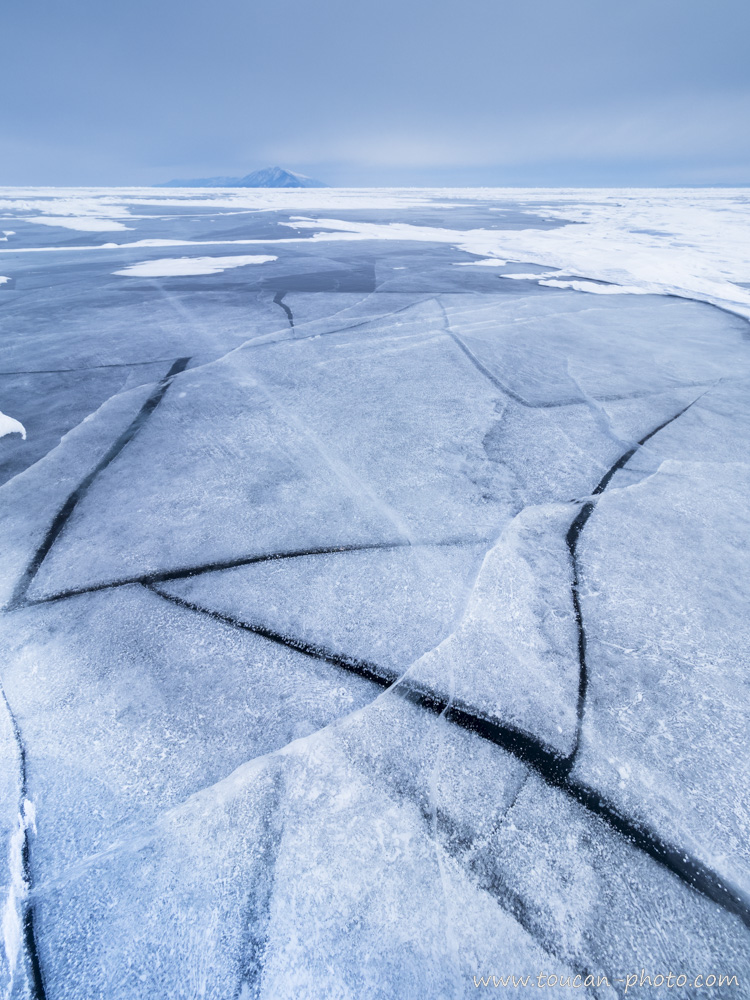 A first ice layer, still thin at the beginning of winter, cracked before the cold froze again the surface of the lake
A first ice layer, still thin at the beginning of winter, cracked before the cold froze again the surface of the lake
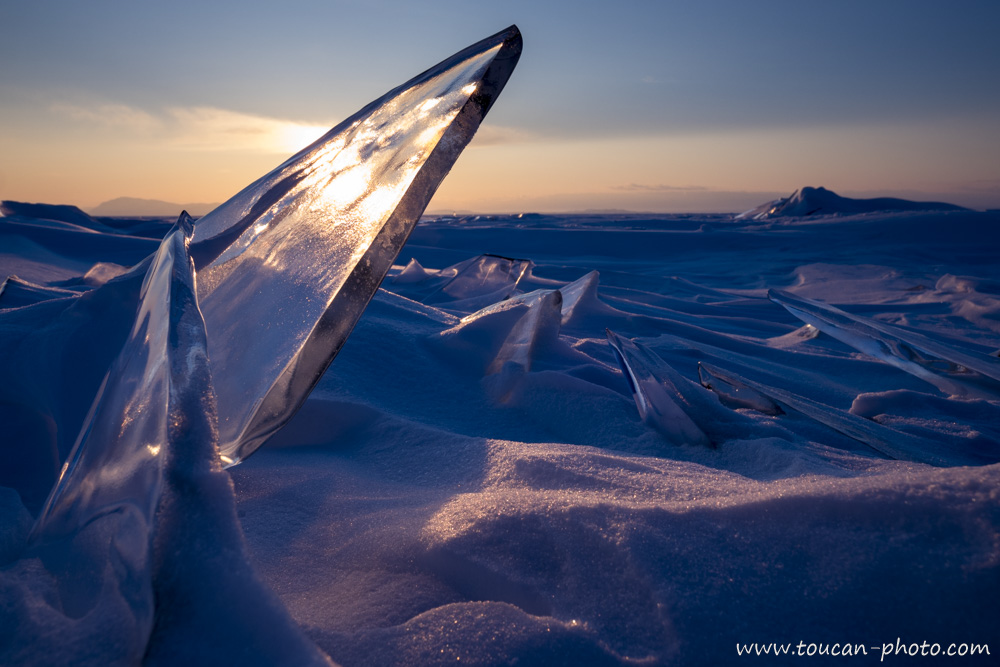 Ice thorne
Ice thorne
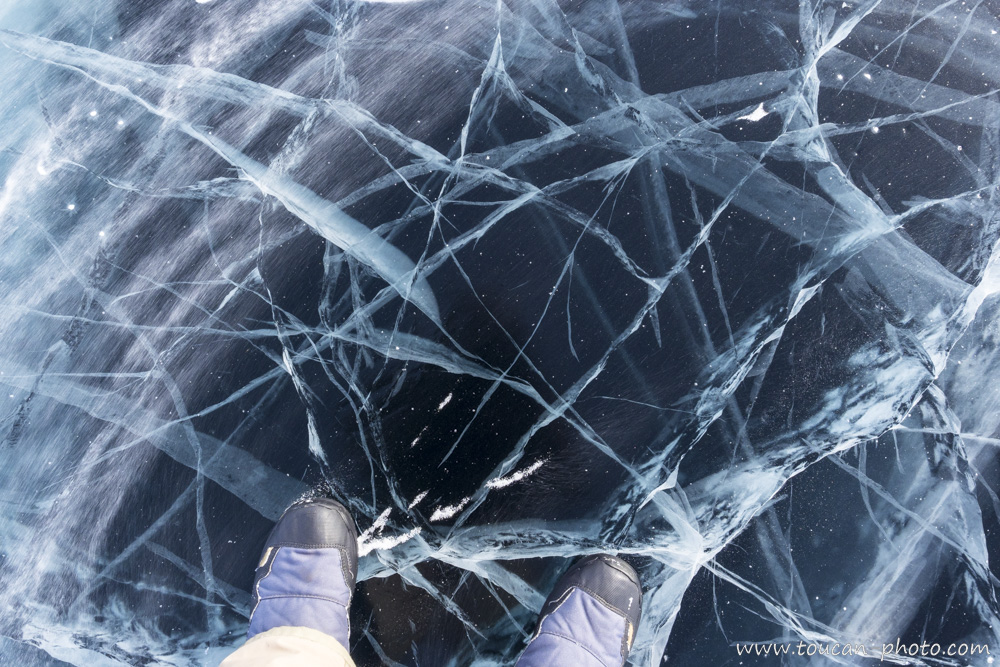 Under my feet, about 120cm of ice. After digging the ice, it would take about 1540 meters diving to reach the bottom of the lake
Under my feet, about 120cm of ice. After digging the ice, it would take about 1540 meters diving to reach the bottom of the lake
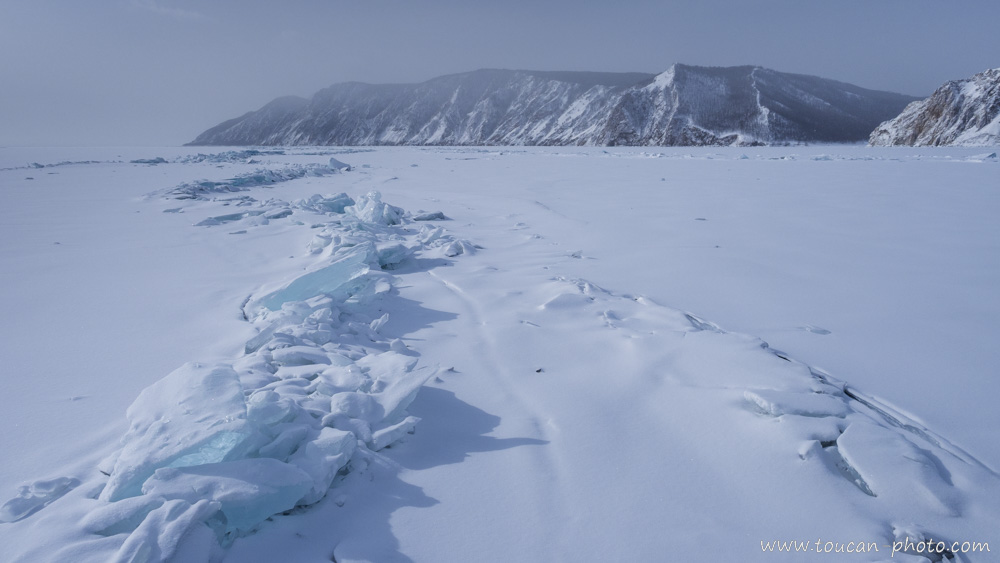 The frozen lake’s surface endures various pressures because of depth’s currents, temperature changes, pressure that it is exerted and that it receives from liquid water, etc. The frozen surface ends up cracking and the resulting plates overlap each other creating the so-called “Toros” entanglements
The frozen lake’s surface endures various pressures because of depth’s currents, temperature changes, pressure that it is exerted and that it receives from liquid water, etc. The frozen surface ends up cracking and the resulting plates overlap each other creating the so-called “Toros” entanglements
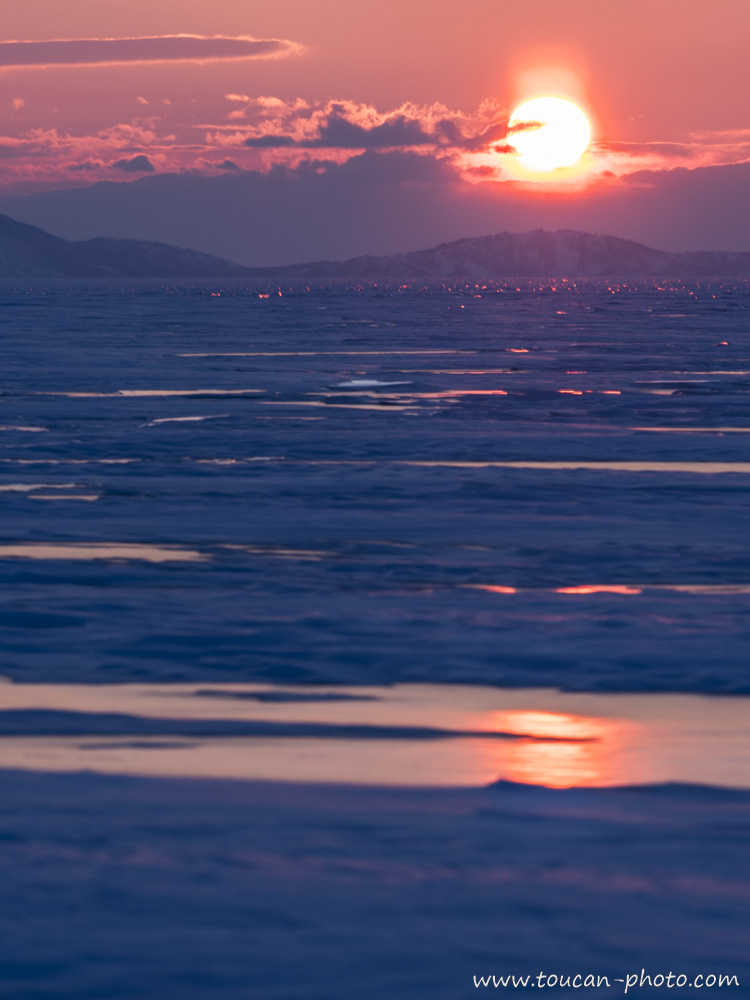 Driven by the rays of the setting sun, the surface of the frozen lake sparkles with a thousand splinters
Driven by the rays of the setting sun, the surface of the frozen lake sparkles with a thousand splinters
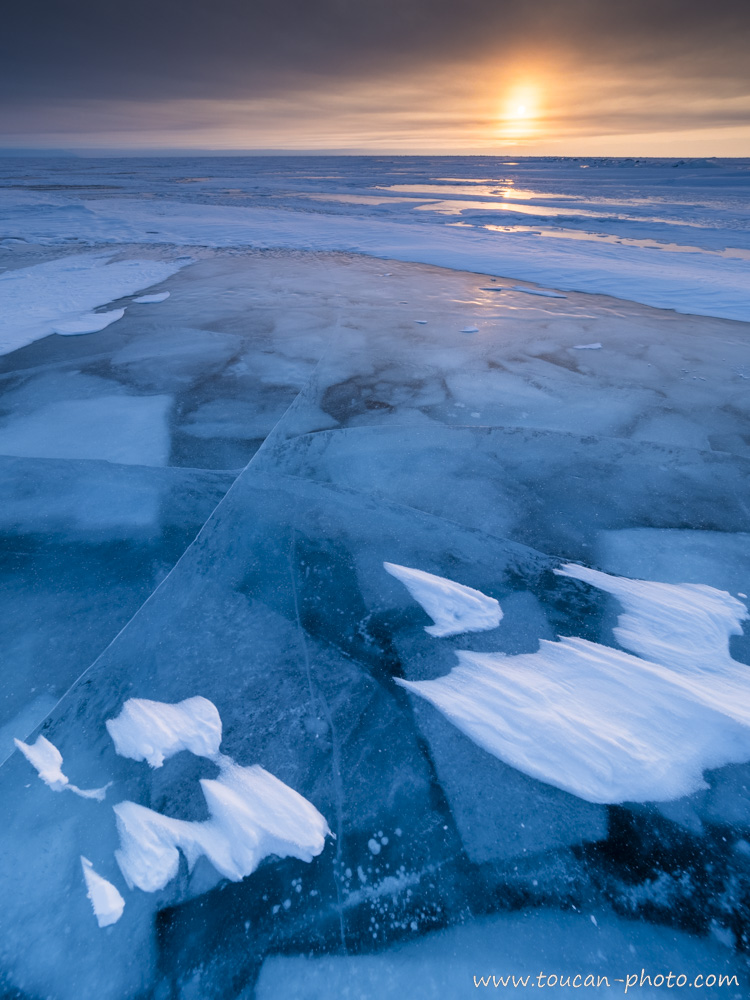 Ice fragments trapped within the frozen surface thickness
Ice fragments trapped within the frozen surface thickness
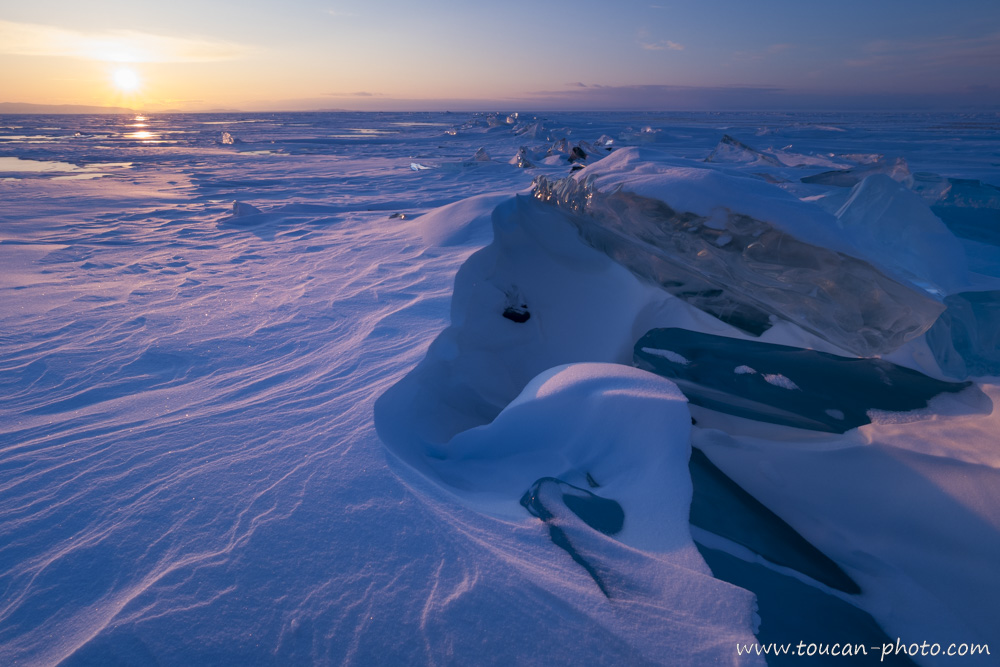
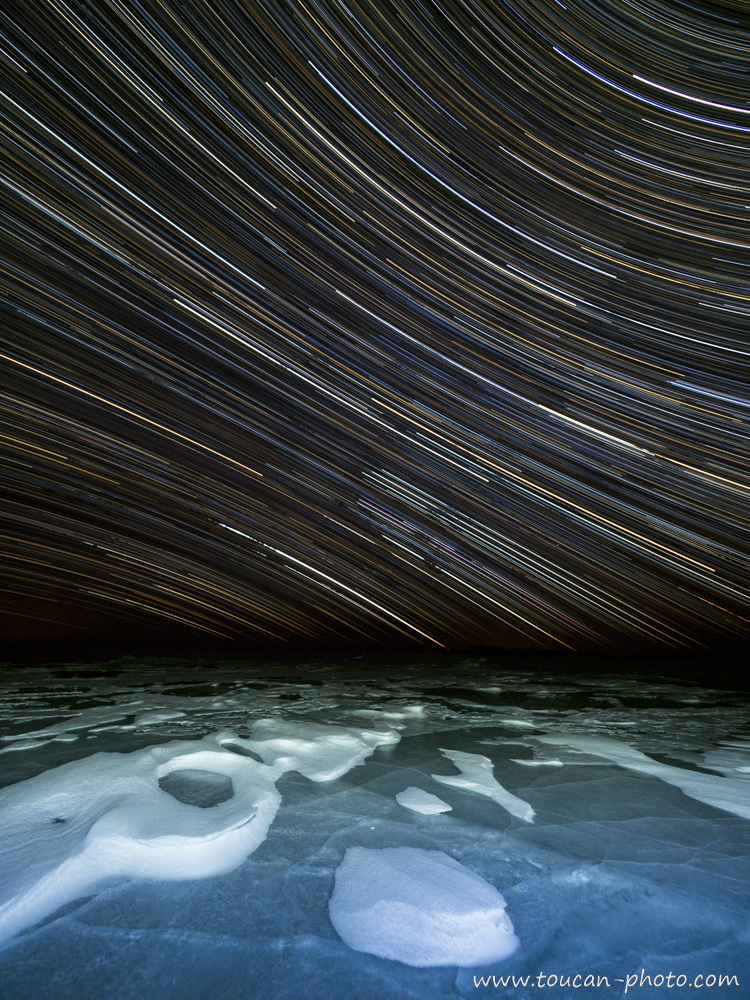 Night view on the frozen lake’s surface. A long exposure photograph captures the star’s movements
Night view on the frozen lake’s surface. A long exposure photograph captures the star’s movements
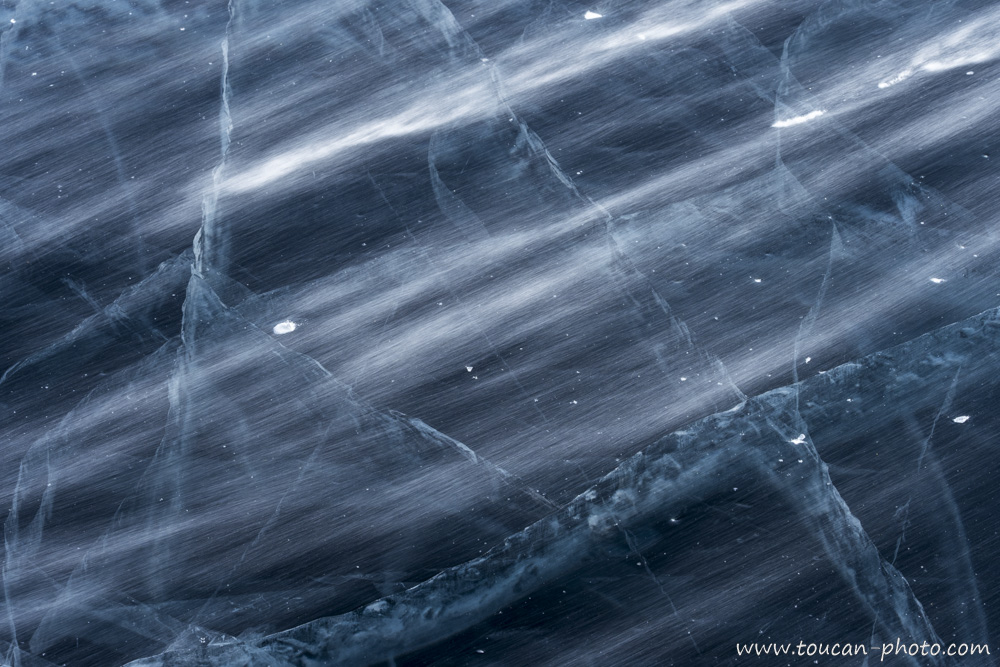 Snow swepts by the wind
Snow swepts by the wind
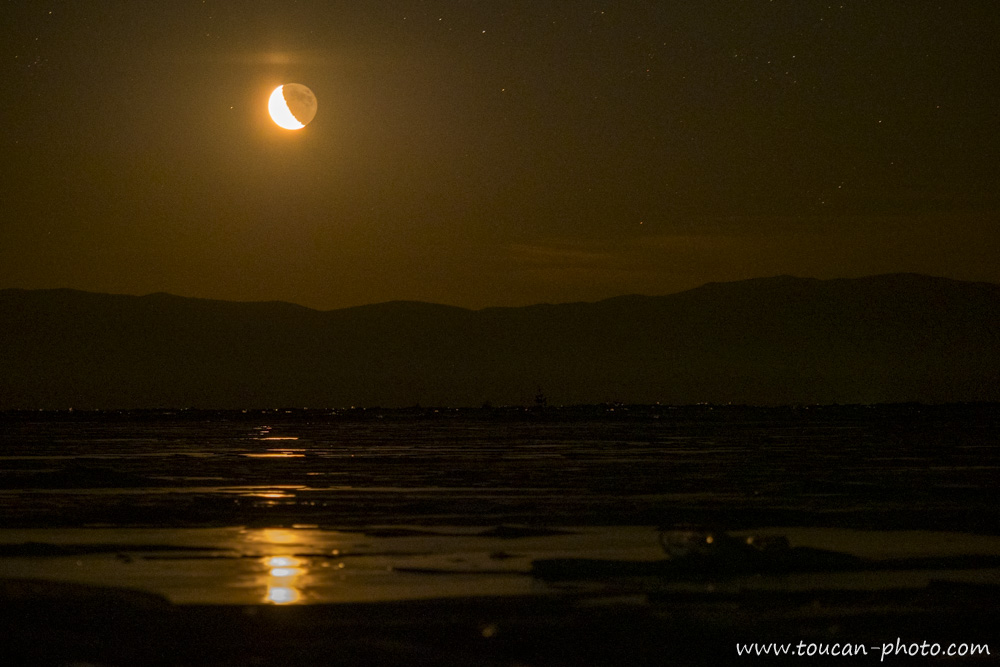 The moon also reflects on Baïkal Lake. This photo was taken at night during the moon rising
The moon also reflects on Baïkal Lake. This photo was taken at night during the moon rising
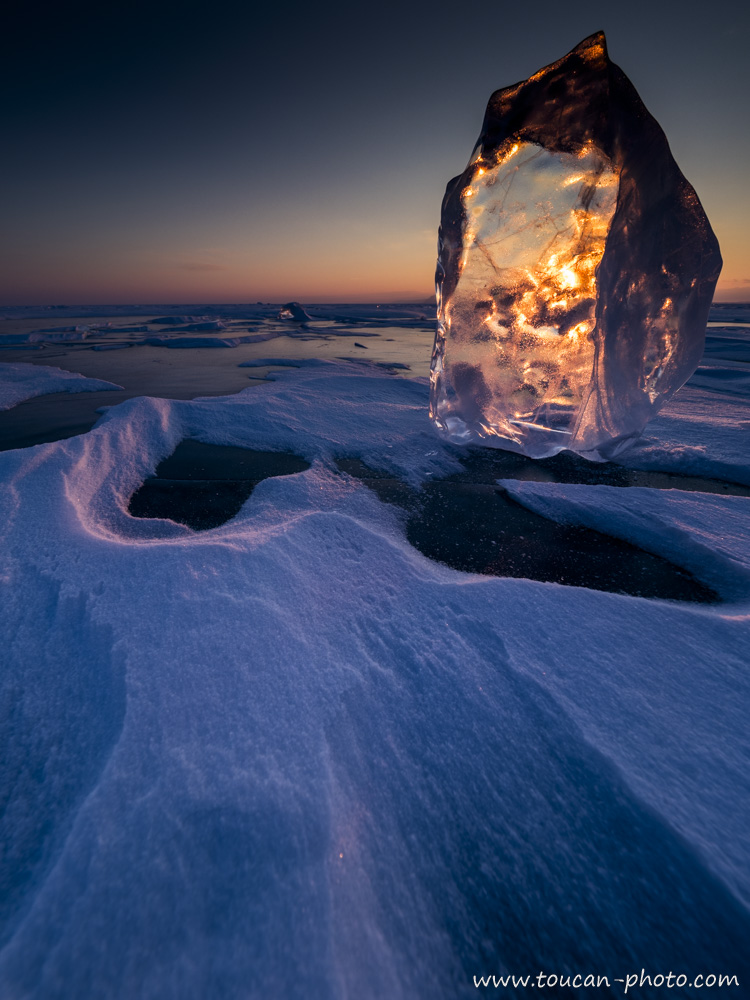 This ice block, crossed by the sun rays, turns itself into a fire block
This ice block, crossed by the sun rays, turns itself into a fire block
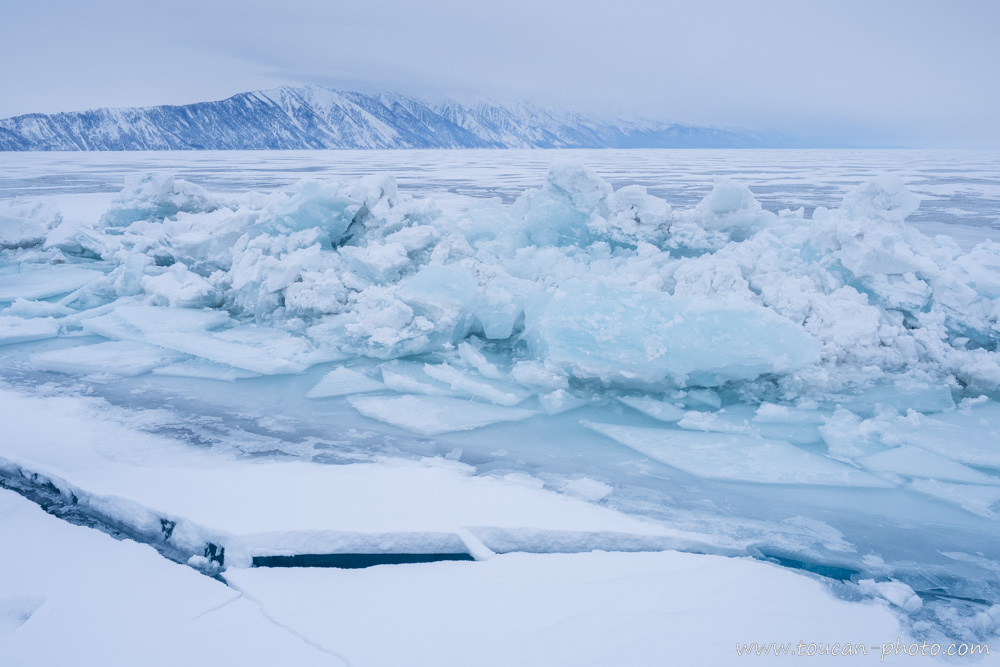 This ice just cracked there, creating a flaw as well as new “Toros”. In the background you can see the “Bear Mountain”, located on the East bank of the lake.
This ice just cracked there, creating a flaw as well as new “Toros”. In the background you can see the “Bear Mountain”, located on the East bank of the lake.
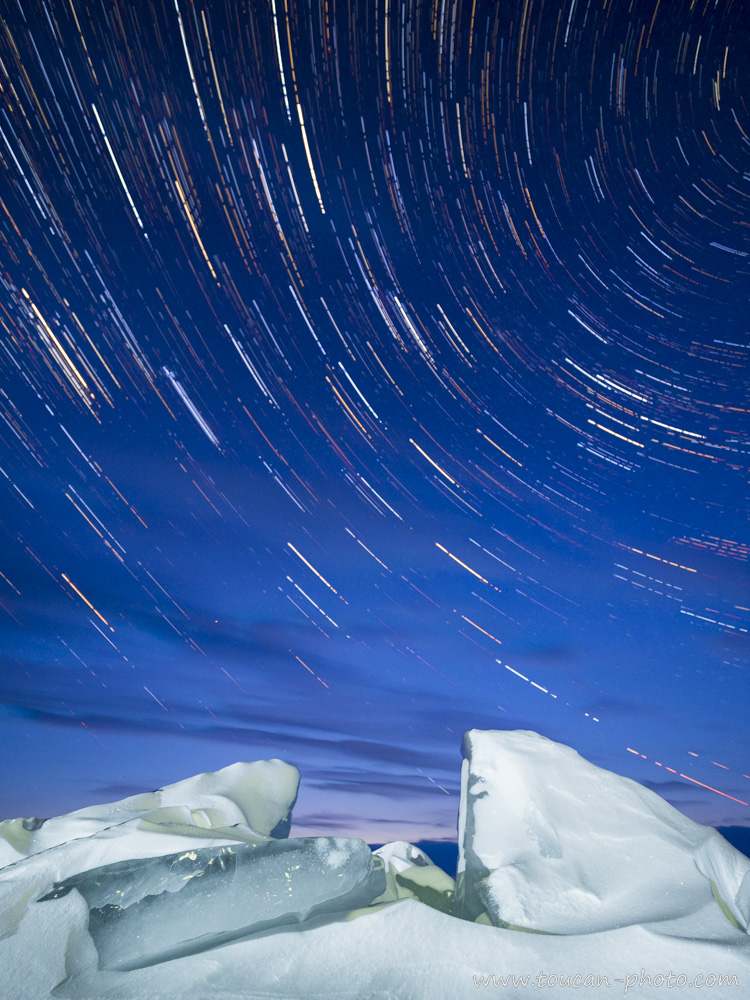 Another long exposure of the star-full sky, with a “Toros” covered with snow in the firstground
Another long exposure of the star-full sky, with a “Toros” covered with snow in the firstground
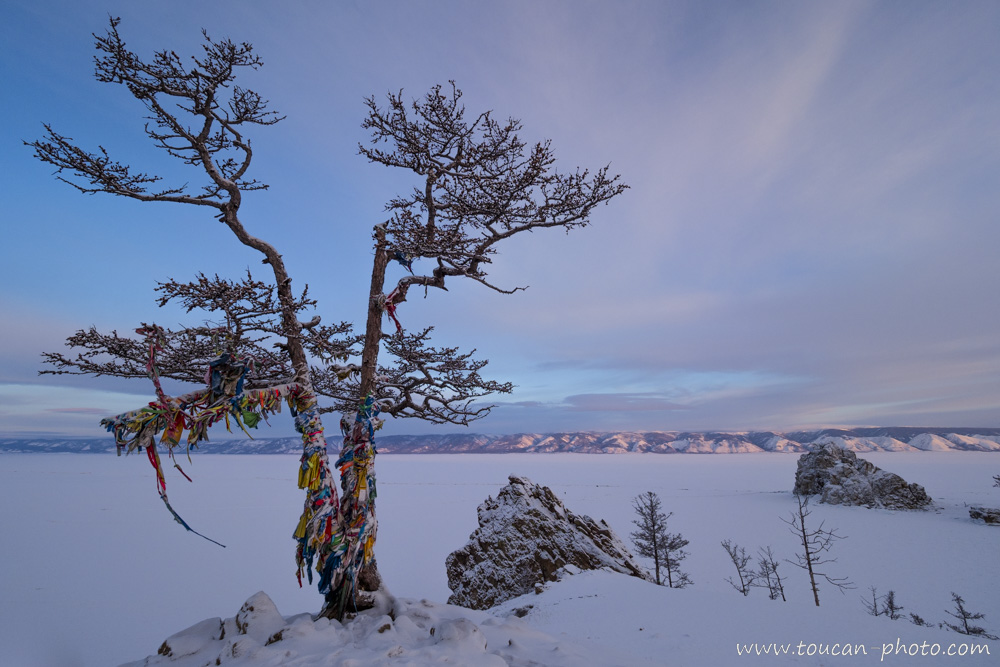 The first living souls to settle in Baïkal Lake area were Buryats, from Mongolia. They had chamanic beliefs. Buryats first considered Baïkal Lake as a sacred sea .
The first living souls to settle in Baïkal Lake area were Buryats, from Mongolia. They had chamanic beliefs. Buryats first considered Baïkal Lake as a sacred sea .
The chamanic ribbons tied the this tree, which overlook the lake, are so many prayers and attentions addressed by the Buryats to their ancestors
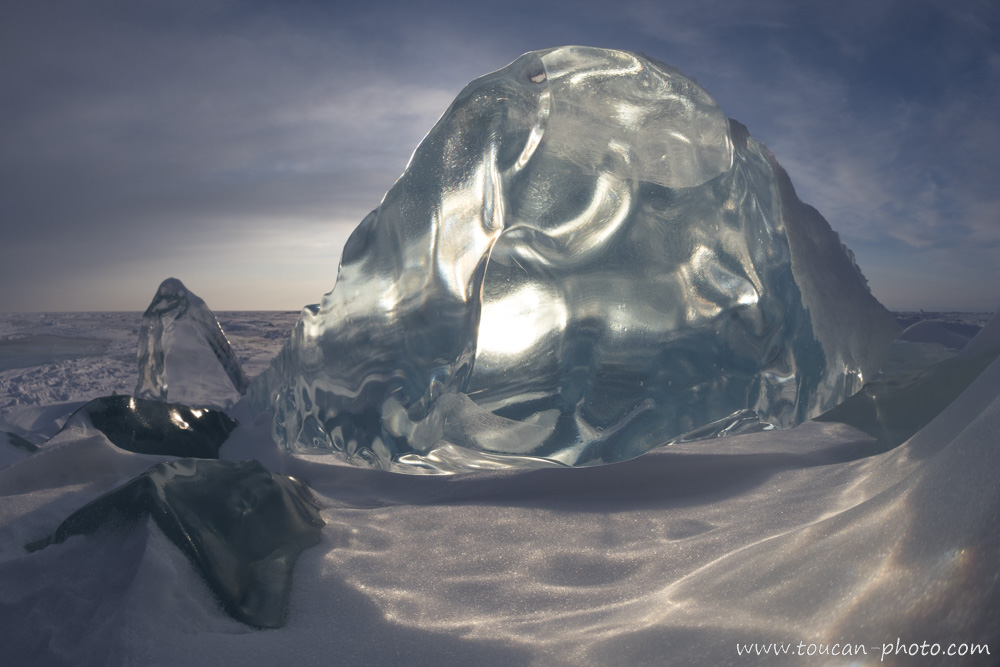 Fragment of eroded ice
Fragment of eroded ice
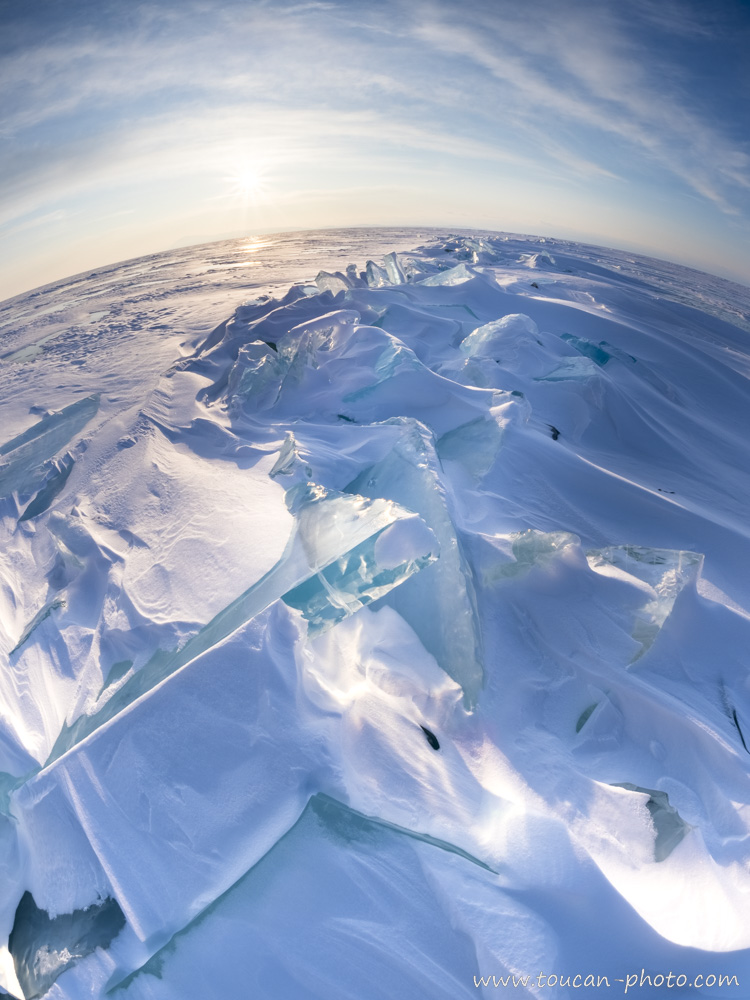
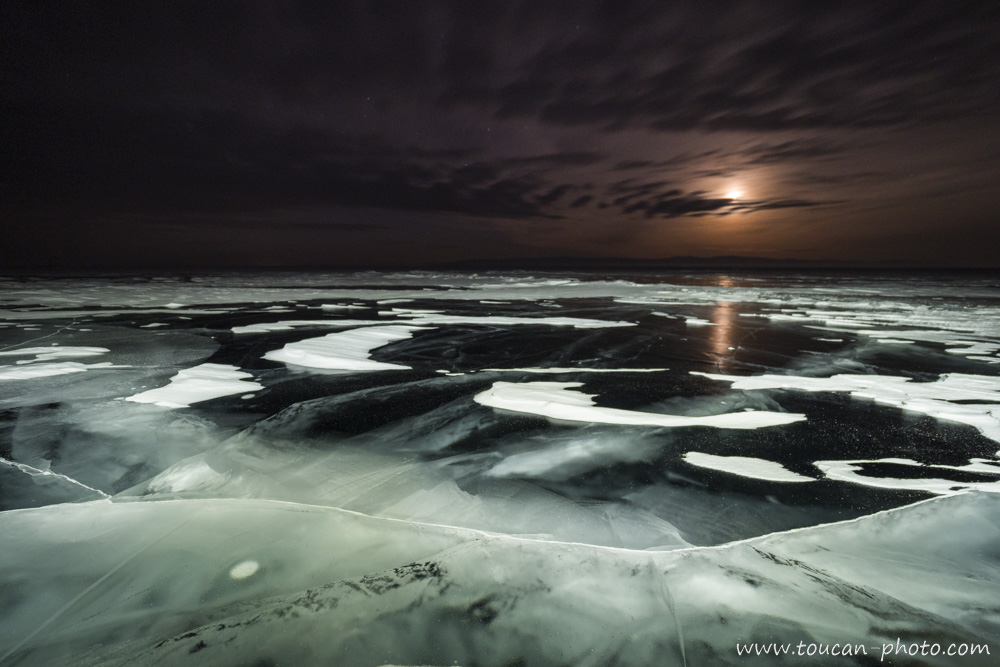
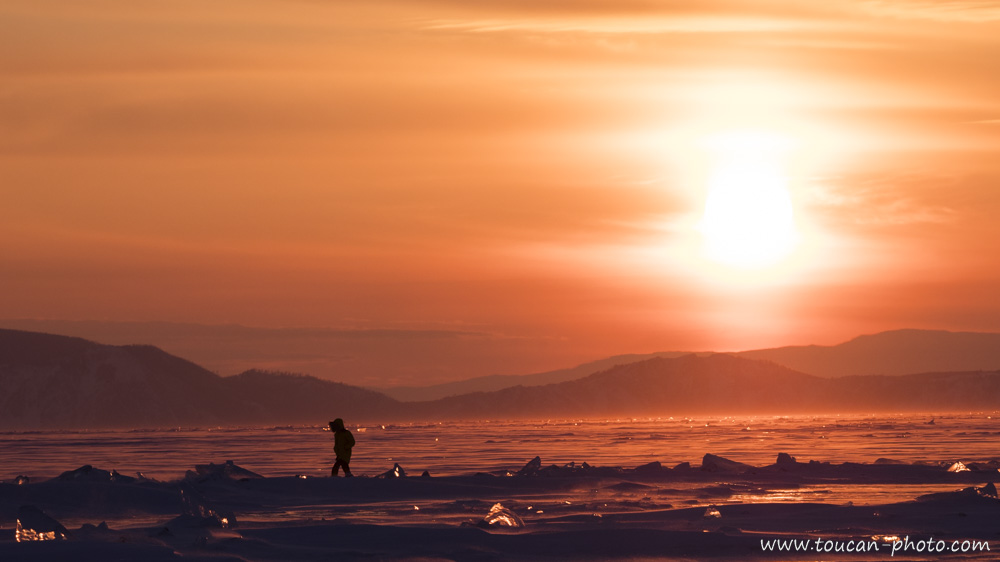 Sunsets are proof that endings can sometimes be beautiful too. – Beau Taplin
Sunsets are proof that endings can sometimes be beautiful too. – Beau Taplin
One of the Baïkal Lake’s tributaries is the Selenge River. This river is partially fed by the Eg River, which itself originates from Khövsgöl Lake, located in Mongolia.
An article about it is available here
To read more about the Baïkal lake:
Baïkal lake on Wikipedia (EN)